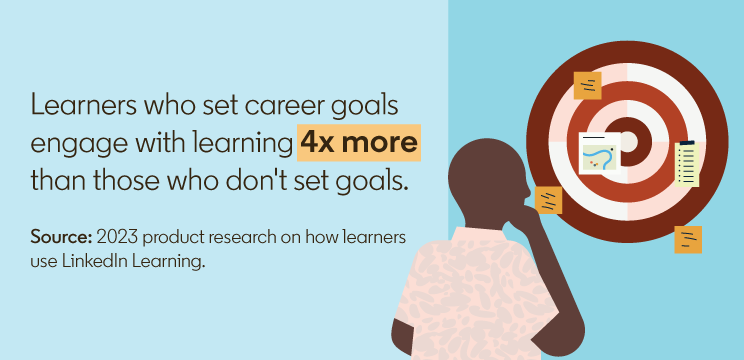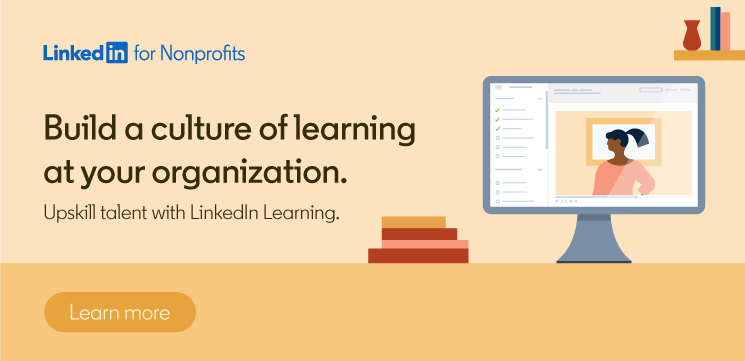
How to Boost Employee Engagement in Your Nonprofit’s Learning and Development Program
Providing learning opportunities is the number one retention strategy used by employers, and it’s easy to see why. LinkedIn’s 2024 Workplace Learning Report found that 7 in 10 people say learning improves their sense of connection to their organization — and 8 in 10 say it adds purpose to their work. But learning can only flourish at organizations if employees actually engage with your learning and development (L&D) program.
This is a challenge that many nonprofits are grappling with. When employees are busy, how do you get them not only interested in L&D, but excited to make the most of the learning resources and opportunities available to them?
The first step is making sure that employees are aware of your L&D program, know how to access resources, and understand that workplace learning is both encouraged and celebrated. Once you’ve built the foundations, try incorporating the following best practices to foster long-term engagement with your program.
Encourage employees to learn what they want, not just what you need
Workplace learning can be a powerful upskilling tool, but leading with this may not be the most effective way to get employees engaged — at least, not at first. Instead, consider sparking curiosity by empowering your team to learn what interests them the most.
If you use a wide-reaching learning platform like LinkedIn Learning, consider highlighting some of the more fun or hobby-based courses available, such as “Taking Great Photos with Your Phone” or “Beginning Acoustic Guitar Music Lessons.” Getting employees on the platform — even if they’re not engaging with work-related content initially — may make them more likely to want to explore further.

Even after employees start using your learning resources, consider encouraging independent exploration, whether it relates to their current role or not. This can pay off for your organization in all kinds of ways, allowing employees to build diverse skill sets and bring new ideas back to their teams.
At Achēv, this employee-driven approach to learning has made all the difference. While the organization assigned a few courses initially, it encouraged the team to “go bananas” and learn whatever they wanted, leading employees to complete over 4,800 LinkedIn Learning videos in just 90 days.
Equip managers to discuss learning goals and co-create employee development plans
In addition to empowering free exploration of learning resources, it’s important to ensure that employees know their managers are invested in and supportive of their professional development. Managers can reinforce a culture of learning at your nonprofit by weaving L&D into every career conversation they have with their direct reports.
Start by having managers carve out time for one-on-one discussions about each employee’s career ambitions. From there, they can work together with their direct report to co-create a personalized professional development plan and map learning resources to it. LinkedIn research shows that learners who set career goals engage with learning 4x more than those who don't set goals, so this strategy can encourage team members to view learning as a key way to advance their career.
Ensure managers don’t take a “set it and forget it” approach to career development planning. Ideally, they should check in with employees regularly to discuss their progress, provide encouragement and guidance, and adjust the plan as needed. One leading dementia research charity in the UK also uses LinkedIn LinkedIn to ensure employees have pre- and post-training support.
Managers can also demonstrate the organization’s commitment to learning and development by ensuring learners are recognized for their efforts. This can happen in small ways like shouting out an employee in a team meeting for achieving a learning goal ahead of schedule, as well as in big ways, such as factoring learning engagement into promotion decisions.

Make learning opportunities as accessible as possible
The easier it is for employees to engage with learning, the more likely they will be to use the resources that your organization provides. This can be an especially important consideration for nonprofits, many of which have to balance the needs and requirements of desk-based employees with those working in the field.
This was a key factor in Canadian Blood Services’ decision to offer LinkedIn Learning access to employees. With two-thirds of its workforce operating on the front lines, the L&D team wanted to ensure that learning opportunities were available “at everyone’s fingertips 24/7 and accessible through their own devices.” As of September 2023, 66% of the organization had activated their learning licenses, and of that 66%, approximately 38% were frontline workers.
Offering on-demand learning opportunities can also help organizations to engage employees who are geographically dispersed, work irregular hours, or may need to approach learning in short bursts throughout the week. But this doesn’t have to mean that learning is entirely a solo affair. Managers can make learning feel like an engaging, communal activity by taking steps like asking employees to share what they’ve been learning lately in team meetings (and modeling this behavior themselves) or facilitating learning groups if employees express interest.
Building a strong L&D program that employees love can help your nonprofit attract and retain great talent. To learn more about how LinkedIn Learning can enhance your L&D strategy, contact our team.

